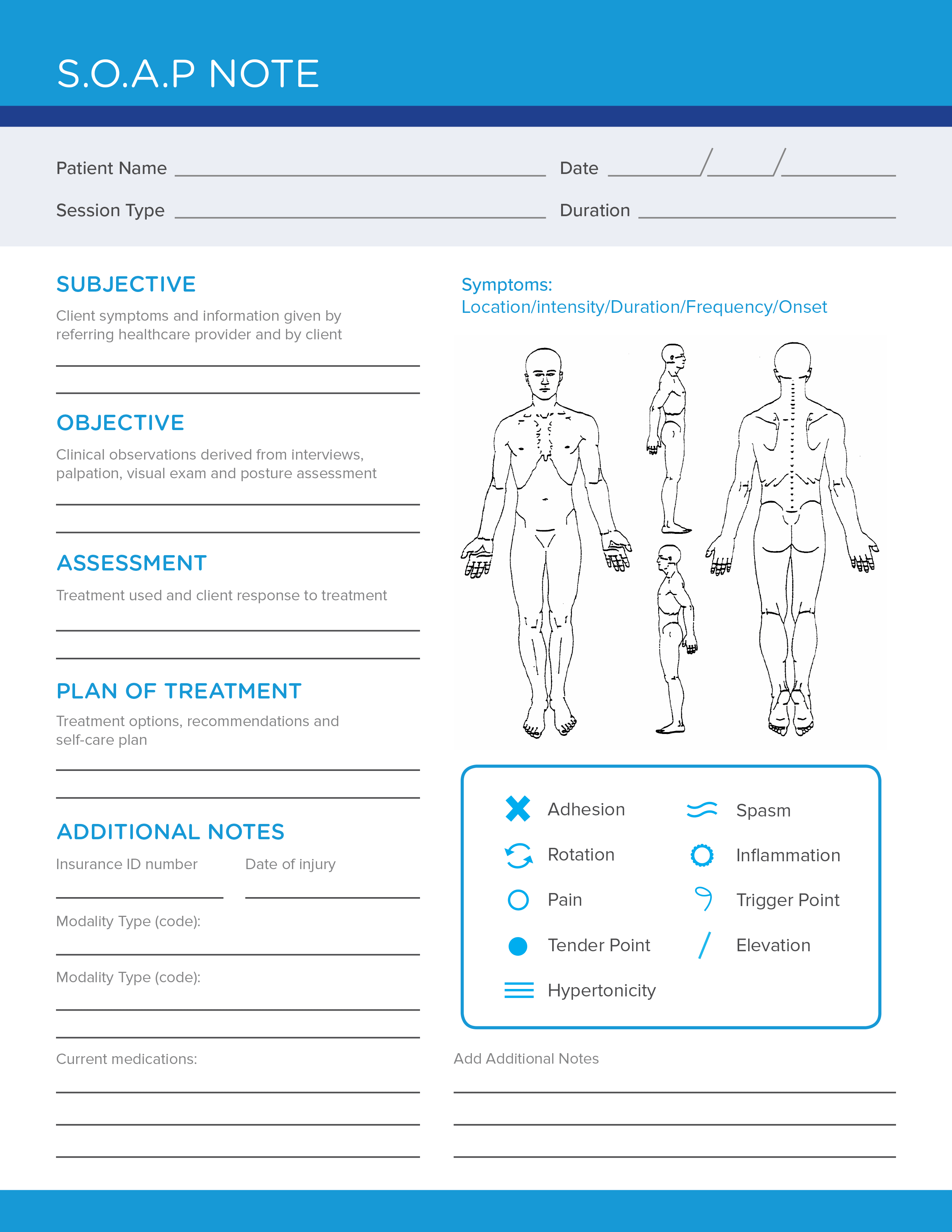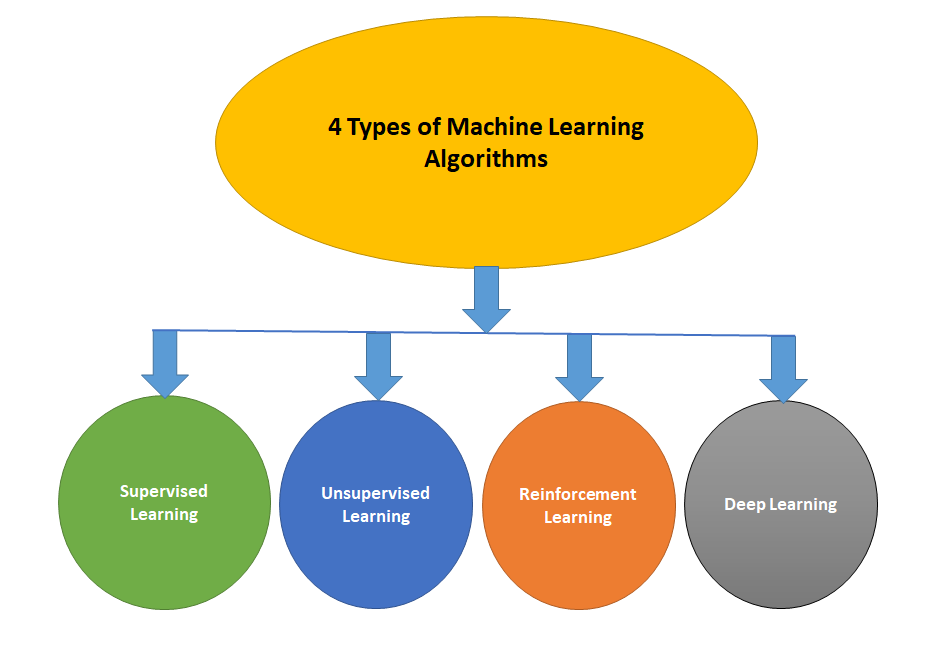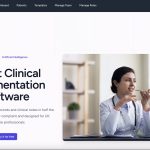The landscape of healthcare documentation is undergoing a profound transformation thanks to artificial intelligence. As clinicians continue to wrestle with administrative burdens that consume valuable patient care time, AI-powered documentation tools are emerging as game-changers in the healthcare industry.
In this comprehensive guide, we’ll explore how AI is revolutionising medical documentation, its measurable benefits for healthcare providers, and how innovative solutions like PatientNotes.Ai are leading this transformation in 2025.
The Documentation Burden: A Healthcare Crisis
Before diving into AI solutions, it’s crucial to understand the scale of the documentation challenge facing healthcare providers today:
Time Constraints and Burnout
Recent studies reveal a troubling reality: physicians spend up to 55% of their workday on documentation tasks rather than direct patient care. This administrative burden contributes significantly to clinician burnout, with many healthcare professionals reporting documentation as a primary source of workplace stress.
According to research published in JAMA Network Open, clinicians consistently identify EHR documentation as one of the most frustrating aspects of their practice. The time spent documenting care outside normal working hours—often referred to as “pajama time”—further erodes work-life balance and professional satisfaction.

Documentation Quality and Patient Care
Beyond the impact on clinicians, documentation burden affects patient care quality. When healthcare providers are rushed through documentation:
- Important clinical details may be missed
- Notes become templated and generic rather than patient-specific
- The risk of documentation errors increases
- Time for direct patient interaction decreases
These challenges create a pressing need for solutions that can maintain or improve documentation quality while reducing the time burden on clinicians.
How AI is Transforming Medical Documentation
Artificial intelligence technologies are reshaping how clinical documentation occurs through several key capabilities:
1. Speech Recognition and Natural Language Processing
Advanced AI systems can now accurately transcribe clinical conversations in real-time, converting spoken interactions into structured clinical notes. Unlike basic dictation tools of the past, modern AI can:
- Distinguish between multiple speakers (clinician and patient)
- Accurately capture medical terminology
- Format information into appropriate clinical documentation sections
- Filter out irrelevant conversation
PatientNotes.Ai utilises state-of-the-art speech recognition technology specifically trained on medical terminology, enabling unprecedented accuracy in clinical environments.

2. Ambient Clinical Intelligence
Perhaps the most revolutionary advancement is ambient clinical intelligence (ACI)—AI systems that passively “listen” to clinical encounters and automatically generate documentation without requiring the clinician to dictate or issue specific commands.
These systems work silently in the background, allowing natural interactions between patients and providers without technology interruptions. The AI extracts relevant clinical information and organises it into structured notes that integrate with existing electronic health record systems.
3. Clinical Context Understanding
Modern medical documentation AI goes beyond simple transcription by understanding clinical contexts and relationships:
- Automatically categorising information into appropriate SOAP note components
- Distinguishing between patient history, current complaints, and treatment plans
- Identifying medication discussions and creating prescription documentation
- Recognising diagnostic reasoning and assessment formulation
This contextual understanding enables AI to generate not just transcripts, but professionally formatted clinical notes that adhere to documentation standards.

4. Integration with Electronic Health Records
AI documentation tools now seamlessly integrate with major EHR systems, allowing:
- Direct insertion of AI-generated notes into the patient record
- Automatic coding suggestions for billing purposes
- Intelligent retrieval of relevant patient history during documentation
- Consistency checking against previous documentation
This integration eliminates duplicate work and creates a more cohesive documentation experience.
Evidence of Impact: The Benefits of AI in Medical Documentation
The promise of AI in documentation goes beyond theoretical advantages. Recent research demonstrates measurable benefits:
Time Savings and Reduced After-Hours Documentation
A 2024 nonrandomized clinical trial published in JAMA Network Open evaluated clinicians’ experiences before and after implementing an AI-powered documentation tool. The results were compelling:
- 47.1% of clinicians using AI documentation reported decreased time on the EHR at home
- 44.7% reported decreased weekly time on documentation outside normal working hours
- 43.5% reported decreased time on documentation after visits
- 44.7% reported less frustration using the EHR
These findings suggest that AI documentation tools can significantly reduce the administrative burden on healthcare providers, potentially addressing a major contributor to burnout.
Improved Documentation Quality
Beyond time savings, AI shows promise for enhancing documentation quality:
- More comprehensive capture of patient information
- Increased specificity in clinical descriptions
- Better structured notes for improved readability
- More consistent documentation across providers
PatientNotes.Ai‘s advanced algorithms help ensure that documentation meets both clinical and regulatory standards while maintaining an appropriate level of detail.
Enhanced Patient Experience
When clinicians can focus more on patients and less on documentation, the patient experience improves:
- More eye contact and engagement during visits
- Less time spent typing during the encounter
- Improved perception of clinician attentiveness
- More thorough documentation of patient concerns
Key AI Technologies Powering Medical Documentation
Several distinct AI technologies contribute to modern documentation solutions:
Natural Language Processing (NLP)
NLP enables computers to understand and interpret human language, a fundamental requirement for medical documentation AI. In healthcare, specialised NLP models are trained on medical terminology and clinical language patterns to accurately process healthcare conversations.
These systems can:
- Extract clinical concepts from unstructured text
- Identify relationships between symptoms, diagnoses, and treatments
- Structure information according to clinical documentation conventions
- Recognise medical terminology and abbreviations
Machine Learning for Contextual Understanding
Machine learning algorithms help AI systems improve their understanding of clinical contexts over time. By analysing patterns in millions of clinical notes, these systems learn to:
- Identify the most relevant information to include in documentation
- Predict appropriate medical codes for billing
- Suggest clinical documentation improvement opportunities
- Recognise documentation gaps or inconsistencies

Voice Recognition With Medical Specialisation
While general voice recognition has improved dramatically, medical documentation requires specialised models trained on:
- Medical terminology pronunciation
- Clinical speech patterns
- Various accents and speaking styles
- Noisy healthcare environments
PatientNotes.Ai employs voice recognition technology specifically optimised for healthcare settings, resulting in superior transcription accuracy for medical terminology.
Real-World Applications of AI in Clinical Documentation
AI documentation solutions are being deployed across various healthcare settings with promising results:
Outpatient Clinic Implementation
In busy outpatient settings, AI documentation tools enable:
- Completion of notes during or immediately after visits
- Reduced documentation backlogs
- More detailed capture of patient education provided
- Consistent documentation across provider teams
Emergency Department Usage
In fast-paced emergency settings, AI documentation:
- Captures critical information in real-time
- Documents the chronology of interventions accurately
- Reduces documentation delays during high-volume periods
- Ensures thorough documentation despite time constraints
Telehealth Integration
As telehealth continues to grow, AI documentation tools:
- Automatically record and transcribe virtual visits
- Generate notes that match in-person documentation quality
- Integrate with telehealth platforms for seamless workflows
- Help maintain documentation consistency across care modalities
Case Study: PatientNotes.Ai’s Impact on Clinical Documentation
PatientNotes.Ai represents the cutting edge of AI documentation technology in 2025. This sophisticated platform combines multiple AI technologies to create a comprehensive documentation solution:
Core Features of PatientNotes.Ai
- Ambient Documentation: Captures clinical conversations without requiring activation commands or dictation
- Intelligent SOAP Structuring: Automatically organises information into appropriate clinical note sections
- EHR Integration: Seamlessly connects with major electronic health record systems
- Documentation Quality Checks: Identifies potential gaps or inconsistencies in documentation
Measured Outcomes
Healthcare organisations implementing PatientNotes.Ai have reported:
- Average time savings of 8-12 minutes per patient encounter
- 35% reduction in after-hours documentation time
- 40% improvement in documentation completeness scores
- Significant increase in clinician satisfaction with EHR usage
One family medicine clinic reported that after implementing PatientNotes.Ai, their clinicians were able to see an additional 2-3 patients per day while leaving work on time with notes completed—a dramatic improvement over their previous workflow.
Implementation Considerations for AI Documentation Tools
While the benefits of AI documentation tools are compelling, successful implementation requires careful planning:
Technical Infrastructure Requirements
Healthcare organisations should assess:
- Network capabilities and bandwidth
- Examination room acoustics and ambient noise
- Integration capabilities with existing EHR systems
- Security and privacy controls for audio capture
Training and Adoption Strategies
Successful implementations typically include:
- Comprehensive initial training for clinicians and staff
- Graduated implementation with super-users leading the way
- Regular feedback sessions during early adoption
- Continuous improvement based on user experience
Documentation Workflow Redesign
Rather than simply adding AI to existing workflows, organisations benefit from:
- Reimagining the entire documentation process
- Clarifying roles between AI and human documentation review
- Establishing quality assurance protocols
- Creating fallback procedures for technology limitations
PatientNotes.Ai provides comprehensive implementation support including workflow consultation, training, and ongoing optimisation to ensure successful adoption.
Addressing Common Concerns About AI in Medical Documentation
Despite the benefits, healthcare providers often express several concerns about AI documentation tools:
Accuracy and Clinical Safety
Concern: Will AI make critical errors in documentation that could affect patient safety?
Reality: Modern AI documentation tools achieve accuracy rates exceeding 95% for medical terminology, and all systems require clinician review before notes are finalised. PatientNotes.Ai implements multiple validation checks to flag potential inaccuracies for provider review.
Privacy and Security
Concern: Does recording patient encounters create new privacy risks?
Reality: Leading AI documentation systems employ enterprise-grade security including:
- End-to-end encryption for all audio and text data
- Compliance with healthcare privacy regulations including HIPAA, GDPR , NHS DATA
- Secure cloud storage with strict access controls
- Clear patient consent processes
Clinical Judgment and Documentation Ownership
Concern: Will AI diminish the role of clinical judgment in documentation?
Reality: AI tools are designed to assist with the mechanical aspects of documentation, not replace clinical reasoning. Clinicians maintain full editorial control and professional responsibility for all documentation, with AI serving as a sophisticated assistant rather than an autonomous documentarian.
Cost and Return on Investment
Concern: Are AI documentation tools worth the investment?
Reality: While implementing AI documentation solutions requires initial investment, the ROI typically becomes positive within 6-12 months through:
- Reduced documentation time costs
- Decreased burnout and turnover expenses
- Improved revenue through more accurate coding
- Enhanced productivity allowing more patient encounters
The Future of AI in Medical Documentation
As we look beyond 2025, several emerging trends will likely shape the evolution of AI documentation tools:
Multimodal AI Documentation
Future systems will incorporate:
- Visual recognition of clinical actions and procedures
- Integration of diagnostic image interpretation
- Gesture recognition for procedural documentation
- Physiological data integration from monitors and devices
Predictive Documentation Capabilities
Advanced AI will begin to:
- Predict likely diagnoses based on documented symptoms
- Suggest appropriate clinical pathways based on documentation
- Alert providers to potential documentation gaps or inconsistencies
- Recommend relevant clinical questions based on partial documentation
Patient Engagement in Documentation
AI documentation will expand to include:
- Real-time summaries for patients during encounters
- Automatic generation of patient-friendly visit summaries
- Integration of patient-reported outcomes into documentation
- Collaborative documentation with patient input
PatientNotes.Ai continues to invest in research and development in these emerging areas, positioning healthcare organisations for the next generation of documentation innovation.
Best Practices for Implementing AI in Medical Documentation
To maximise the benefits of AI documentation tools, healthcare organisations should consider these best practices:
1. Start with Clear Goals
Define specific, measurable objectives for your AI documentation implementation:
- Time savings targets
- Documentation quality metrics
- Clinician satisfaction goals
- Patient experience improvements
2. Select the Right Use Cases First
Not all clinical scenarios benefit equally from AI documentation. Consider starting with:
- High-volume, routine encounters
- Specialties with structured documentation patterns
- Clinicians experiencing significant documentation burden
- Settings with clear documentation quality gaps
3. Engage Clinicians Throughout the Process
Successful implementations feature:
- Clinician champions who advocate for the technology
- User feedback mechanisms from the earliest stages
- Continuous improvement based on frontline experience
- Recognition of clinician concerns and challenges
4. Implement Quality Assurance Processes
Maintain documentation quality through:
- Random sample reviews of AI-generated documentation
- Regular accuracy assessments
- User feedback channels for error reporting
- Continuous model improvement based on identified issues
5. Measure and Communicate Results
Track key metrics and share outcomes:
- Documentation time before and after implementation
- After-hours EHR usage changes
- Clinician satisfaction scores
- Documentation quality assessments
PatientNotes.Ai offers robust analytics capabilities to help organisations track these metrics and demonstrate the value of their AI documentation investment.
Frequently Asked Questions About AI in Medical Documentation
How accurate is AI for medical documentation?
Modern AI medical documentation systems achieve accuracy rates exceeding 95% for medical terminology, comparable to or better than human medical transcriptionists. Solutions like PatientNotes.Ai use specialised medical language models trained on millions of clinical encounters, enabling them to accurately recognise complex medical terminology, understand clinical contexts, and structure information appropriately.
However, all systems still require clinician review before notes are finalised to ensure complete accuracy and appropriate clinical judgment.
How much time can AI documentation tools save clinicians?
Research shows that AI documentation tools can save clinicians 8-12 minutes per patient encounter on average, with some reporting even greater time savings. A 2024 study published in JAMA Network Open found that 47.1% of clinicians using AI documentation reported decreased time on EHR documentation at home, and 44.7% reported reduced documentation time outside normal work hours.
PatientNotes.Ai users typically experience a 30-40% reduction in total documentation time, allowing them to see more patients or improve work-life balance.
Do patients accept AI being used during their medical appointments?
Research indicates high patient acceptance of AI documentation tools when properly introduced. Multiple studies show that over 80% of patients report positive or neutral feelings about AI documentation during their visits, particularly when they understand that it allows their provider to focus more on them rather than on typing.
The key to patient acceptance is transparent communication about how the technology works, what information is being recorded, and how privacy is protected. PatientNotes.Ai provides healthcare organisations with patient education materials to help facilitate these conversations.
How do AI documentation tools integrate with existing EHR systems?
Leading AI documentation solutions like PatientNotes.Ai offer direct integration with major EHR systems through secure APIs and integration frameworks. These integrations allow AI-generated notes to flow directly into the appropriate sections of the patient record, appear in provider workflows for review and signature, and maintain all the formatting and structure expected in the EHR.
Most solutions can be implemented without significant IT infrastructure changes, and many work through simple browser extensions or mobile applications that connect securely to the EHR.
What are the costs associated with implementing AI documentation tools?
The cost of AI documentation solutions typically follows a subscription model based on the number of providers and volume of documentation. While specific pricing varies by vendor and solution scope, organisations should expect initial investment in both the technology and implementation support.
However, the return on investment generally becomes positive within 6-12 months through:
- Reduced documentation time costs (estimated at £85-£150 per hour of clinician time)
- Decreased burnout and turnover expenses
- Improved revenue through more accurate coding
- Enhanced productivity allowing more patient encounters
PatientNotes.Ai offers flexible pricing models to accommodate various organisation sizes and specialties.
What security measures protect patient data in AI documentation systems?
AI documentation systems employ multiple layers of security to protect sensitive patient information:
- End-to-end encryption for all data transmission and storage
- HIPAA compliance with regular security audits and certifications
- Role-based access controls limiting data visibility to authorised personnel
- Secure cloud infrastructure with industry-standard protections
- Data minimisation practices to limit unnecessary information collection
PatientNotes.Ai maintains rigorous security standards and undergoes regular third-party security assessments to ensure patient data remains protected throughout the documentation process.
Key Takeaways
- AI is transforming medical documentation by automating transcription, providing clinical context understanding, and integrating seamlessly with electronic health records.
- Research demonstrates measurable benefits including reduced documentation time, less after-hours work, improved documentation quality, and enhanced patient experiences.
- Multiple AI technologies power these solutions, including natural language processing, machine learning for contextual understanding, and specialised voice recognition.
- Implementation success depends on careful planning, including infrastructure assessment, training strategies, workflow redesign, and quality assurance processes.
- Common concerns about accuracy, privacy, and clinical judgment can be effectively addressed through proper implementation and ongoing vigilance.
- PatientNotes.Ai represents the cutting edge of AI documentation technology, combining ambient intelligence, EHR integration, and documentation quality checks in a comprehensive solution.
- Future developments will likely include multimodal AI, predictive capabilities, and enhanced patient engagement in the documentation process.
As healthcare continues to evolve, AI documentation tools represent one of the most promising approaches to addressing the documentation burden while improving clinical care. By embracing these technologies thoughtfully, healthcare organisations can help their clinicians rediscover the joy of medicine while maintaining the highest standards of documentation quality.
This article was prepared by the healthcare technology specialists at PatientNotes.Ai. For more information about how our platform can transform your clinical documentation processes, visit our website or contact our support team.



